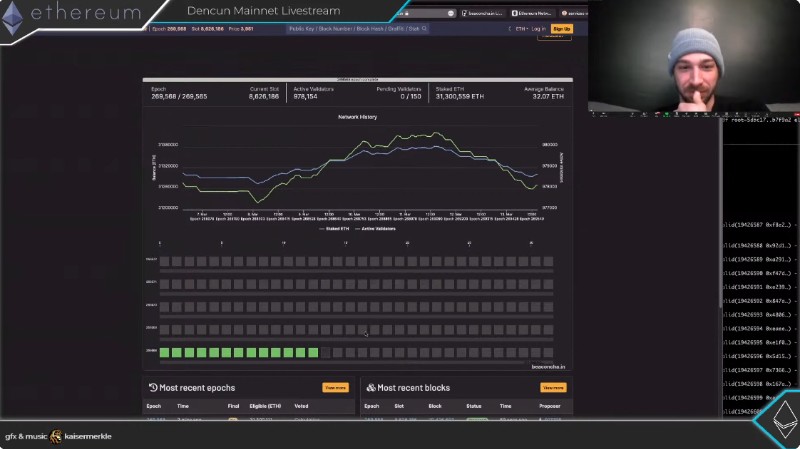|
|
Ethereum developers will be holding their breath for the 12 minutes it takes to work out if Ethereum’s Pectra hard fork has finalized properly after it’s deployed tomorrow.
During every Ethereum hard fork, there is roughly a 12-minute period — the time it takes for two epochs — where over a hundred tireless Ethereum developers vigilantly monitor the state of the network for signs of problems, wondering, Did we do enough?
Every time Ethereum goes through a major hard fork — which is like replacing components of an airplane in mid-flight — there’s a niggling chance that something could go horribly wrong.
But for a decade now, devs have made sure that has never happened — despite some notable problems following the Shanghai fork in 2023 and the Altair fork in 2021.
“We’ve had 10 years without a liveness failure. This is one of the most important parts of the protocol,” Mallesh Pai, a senior director of research at Ethereum software and infrastructure firm Consensys, tells Magazine.
“It’s gone without missing a beat, and through some incredible changes, like the Merge, which was a gigantic feat of engineering to literally change the underlying consensus and still not skip a beat.”
“You build that trust over 10 years. If you mess it up once, you’re back to zero like everybody else.”
Ethereum’s upcoming major hard fork — the Pectra upgrade set for May 7 at 10:05 am UTC — has had an unusually troubled path to mainnet. For the largest hard fork in the blockchain’s history, it’s taken a year and a half to get to this point and failed to finalize properly on the first two testnets. And for the first time in Ethereum’s history, it required a third testnet to be set up in direct response to the issues.
So, what exactly happens in those 12 minutes?
Ethereum devs “holding their breath” as Pectra deploys
One epoch is roughly 6.4 minutes, the period of time it takes for a random committee of Ethereum validators to propose and vote on the validity of new blocks. It’s the time taken for up to 32 blocks to be added to the chain. The first two to three epochs are the danger zone where any issues from a new upgrade are likely to rear their ugly heads.
“The minute they go up to the fork […] they’re not stressed,” explains Nixo, a member of the Ethereum Foundation’s protocol support team. “But it’s like, the one, two, 12 minutes after the fork where they’re watching for finalization, making sure none of the clients are forking off onto other chains or going off onto other forks.”
“So, I would say it’s, like, the 15 minutes after the fork happens that there’s sort of like [gasp] holding your breath.”
During this period, developers are anxiously checking blocks are being proposed on time, explains Pai.
They’re checking voting rates — making sure validators are able to vote on blocks — and that the voting quality is roughly of the same quality as it was pre-fork. Then they’re checking to see when a whole epoch finalizes.


“You let off one big sigh after the first finalization.” Within a few hours, “everything’s running normally, and then everyone just forgets; it’s like the chain has always been running like that, just continuing happily,” adds Pai.
Pectra bugs could crop up almost anytime
However, Pai says it’s still possible for something to go wrong under the surface.
“You’re never completely in the clear. This is not just Ethereum. This is any of the blockchains. Like weird stuff happens for a particular hard fork. It could be an edge case that manifests a month later.”
In May 2023 — a month after the Shanghai hard fork — Ethereum developers went scrambling after the network temporarily lost transaction finality for around 25 minutes, then again for over an hour a day later before the blockchain recovered by itself.
Finality is considered the point at which a transaction becomes irreversible and permanently recorded on the blockchain.
“I do remember being very scared that something weird was going on,” said Pai. “It’s unintended behavior, and when there’s unintended behavior, you don’t know what else is unintended or what else could be going wrong.”
A post-mortem later pointed to a flaw affecting two consensus clients, Prsym and Teku, which issued a fix not long after — though it still took a toll on developers and others in the Ethereum ecosystem.
Another finality incident happened during the…
cointelegraph.com